Original Author: Huafeng Mozhu (华风墨逐)
Hanfu Cutting & Sewing Patterns Detail
-
-
- Zhongyi (中衣)
- Aoqun (袄裙)
- Ruqun (襦裙)
- Beizi (褙子)
- Pan collar Aoqun (盘领袄)
- Quju (曲裾)
- Banbi (半臂)
- Shuhe (裋褐)
- Zhiduo/Zhishen/Daopao (直裰/直身/道袍)
- Panling Pao/Lanshan (盘领袍/襕衫)
-
Shenyi (深衣)
- Yisan (曳撒)
- Inspired Hanfu (改良汉服)
- Updating
-
Preface
Ethnic costumes are different from ordinary clothes that only play the role of warmth and decoration, but they are one of the elements of the appearance of a nation and an important carrier of its traditional culture. It is also an important carrier of the traditional culture of a nation. The cultural connotation of traditional costumes of different nationalities is different, and it can naturally show the spiritual civilization and aesthetics of the nation.
Hanfu is the traditional costume of the Han people, also known as "Han Zhuang" or "Hua Fu".Since the time of the Yellow Emperor, Yao and Shun, hanfu has taken a basic form, and after the inheritance of the rituals of the Zhou Dynasty, it has formed a perfect system of clothing and crown and spread to the people in the Han Dynasty. The hanfu had been developed for thousands of years until the fall of the Ming Dynasty, when it was temporarily stopped.
The Ming Dynasty was the era when the art of hanfu was the greatest, and its fabric weaving, printing and dyeing, and dress cutting, and sewing skills reached an unprecedented height. The Ming Dynasty costumes in the surviving relics are sufficient to show the profoundness of Chinese costume culture. For example, the costumes of some traditional operas, such as Beijing opera, Kunqu opera, and Yueju opera, have more elements of hanfu. Buddhist and Taoist costumes based on hanfu have been preserved and are still developing independently after the fall of Ming Dynasty; hanfu can still be seen in some ancient books and paintings.
There was a small-scale hanfu revival movement in the late Qing Dynasty and the early Republic of China, but for various reasons, the revival of hanfu did not really continue in the Republic of China, which inherited the Qing Dynasty clothes to a certain extent and is still under the great influence until today, for example, cheongsam and Tang suit (modified Magua) are often considered as the mainstream Chinese clothes.
The rapid development of material civilization will certainly drive the development of spiritual civilization greatly. With the rapid economic growth, people's demand for spiritual civilization is also growing, and many people have begun to love and value traditional culture, and traditional national costumes are one of them.
In the early twenty-first century, a "Hanfu trend" began to emerge in China, and through the Internet, newspapers, television and other media, more and more people began to recognize and love hanfu, and there were more and more businesses making and selling hanfu, and more and more hanfu-related clubs and social activities, and some hanfu enthusiasts began to learn the cutting and sewing techniques of hanfu.
In recent years, there have been many Chinese historical dramas that have been broadcasted, and the costume style has improved compared to the past. People are enjoying the beautiful costume character shapes in the dramas while enjoying the plot, and the costume costumes themselves have certain shades of traditional costumes. However, the costumes in the drama cannot be equated with hanfu. The fundamental reason is that most of the costumes of film and TV dramas borrowed from opera costumes are not completely correct in shape and do not fully reflect the characteristics of Chinese hanfu costumes, and some of them are common costumes of multiple dynasties, or they are guilty of mixing and matching through dynasties.
According to the author (Huafeng Mozhu), the modern hanfu is based on the ancient form, combined with the physical characteristics of modern people, using modern drawing and cutting sewing technology, and adding modern aesthetic sense and restored into the costume, whose design is based on ancient books, existing costume relics, and ancient figure paintings. From the day I (Huafeng Mozhu) became a hanfu enthusiast, started to collect information about hanfu making, learn about hanfu drawing, cutting and sewing, and finally finished this set of Hanfu cutting and sewing patterns reference guide with a more complete system after unremitting efforts.
This guide is based on the Ming-style hanfu, and includes sewing patterns of Chinese clothing such as the Zhongyi, Aoqun, Pan collar robe, Zhiju, Zhishen, Daopao, and Shenyi, etc. Each style is detailed to each standard model, with detailed diagrams and precise dimensions in the detailed drawings. The purpose of this guide is to let more people understand the structural characteristics of hanfu, learn about hanfu, and more importantly, to provide hanfu lovers with the corresponding hanfu cutting and sewing reference templates, so as to make a small contribution to the revival of hanfu. Believe that one day, hanfu can be revived and become one of the dresses worn in important festivals, meetings and ceremonies, and with a little improvement, hanfu can become a casual dress worn by the general public on a daily basis.
Description
I. How to use this guide
First of all, this guide is not a tutorial in the strictest sense of the word, but is more focused on showing the patterns of each style and model, and its dimensions are more precise and detailed, so it can be used for the cutting and sewing of common hanfu. In addition, the hanfu clothing form in this book cannot avoid being slightly modified, so it may not exactly match the ancient style, but it can definitely be called hanfu.
At present, there are more and more hanfu vendors on the market, but hanfu with exquisite in forms and good workmanship are still relatively expensive, not to mention the dress products of high-end hanfu brands. It is not surprising that hanfu made of top quality fabrics and exquisite cloth patterns can fetch high prices.
Hanfu lovers can refer to this guide to find out their favorite hanfu styles, and then find out the most suitable clothing pattern for their own models to make their favorite hanfu, and if you don't have time to make or have less cutting skills, you can find a professional tailor to do it for you, so the cost of making hanfu should be lower than the cost of buying hanfu directly from a hanfu merchant, and you can also choose your own fabric and take accurate measurements to get your favorite hanfu. One of the author's goals in writing this guide is to try to popularize hanfu, to make it cheaper and simpler to make personalized custom hanfu, and to change people's previous perception that hanfu is expensive and can only be made into formal dresses.
Each chapter of this guide will first introduce the hanfu form of that chapter, followed by a reference chart for each size, and then the order of the types of drawings for each size will be appearance drawings, perspective drawings and expansion drawings, detail size drawings.
- The appearance drawing is the appearance of the garment laid out flat, but not the actual appearance of the garment when worn.
- The perspective drawing is drawn on the basis of the appearance drawing, in order to show the internal structure, and the perspective can show the size of the inner lapel, the complete direction of the collar, the position of the internal and external ties, and other elements.
- The expansion drawing is a complete unfolding of the garment in a flat state, in order to see more directly the effect of the semi-finished cut, but this unfolding drawing does not contain the interface between the fabric and the fabric, that is, it is only the net size, which is equivalent to the appearance of the garment after it is cut from both sides and laid flat.
- In the detailed size drawing, the expansion drawing is decomposed to show the shape and detailed size of each piece of fabric, and the fabric interface and closure are expanded to the outside, some parts are expanded by 1 cm, some places are expanded by 2 cm, the size and process of the interface and closure are for reference only, the dressmaker can adjust the size of the interface and closure according to the specific cutting process.
- *Matching schematic refers to a set of clothing with a plan in the form of an expansion drawing, mostly used as an illustration of the introduction of the form.
II. About specification and size
All the sizes shown in this guide are in millimeters, and all the sizes shown are mainly slim-fitting models for spring and summer, all the sizes shown are available for reference, but they are not absolute values.
When you make or customize a hanfu based on the drawings in this guide, it is best to combine your own body characteristics and consider the season of wear. If there is something not quite right, please adjust the details of the size and process by yourself, and optimize and refine the specific cutting method by yourself, for example, you can shorten or lengthen the length of the sleeves according to your preference, or add sleeve edges for beauty; you can adjust the length of the pants and skirt by yourself; if you make a jacket for autumn and winter or a loose top, you can enlarge the collar, bust, cuffs and other data of the finished garment as appropriate......
The model number of the garment used in this guide. The model number of a top is composed of three groups of numbers: human height, chest circumference and body type. Height is based on the actual measurement results, and the chest circumference here refers to the net chest circumference of the human body without the amount of clothing. Body type is usually expressed by the letters A and B. Type A means a standard general body type, and type B means a slight fat body type. If a top is 170/92A, it means that the top is suitable for people with a general body type of about 170 cm in height and 92 cm in chest circumference.
The model number of skirt and pants also consists of three groups of numbers: human height, waist circumference and body type, of which height and waist circumference are subject to actual measurement results. For example, if the model number of a pair of pants is 160/68A, it means that these pants are suitable for people with general body type of about 160 cm in height and 68 cm in waist circumference.
The model numbers of women's tops are 155/80A to 175/96A, men's tops are 165/88A to 185/104A, and the model numbers of unisex style tops are 155/80A to 185/104A.
Interpretation of some data
- Height: measured vertically from the top of the skull to level with the heel.
- Chest circumference: measured horizontally from the armpit through the fullest part of the chest for one circle, the size is the base chest circumference (in practice, the garment is made by adding a certain size according to the type of garment).
- Waist circumference: measured horizontally for one circle around the thinnest part of the waist, the size is the base waist circumference (when actually making the garment, a certain size is added according to the garment type).
- Hip circumference: measured horizontally around the hip for one circle after the highest point of the hip.
- Garment length: the distance from the back of the neck to the bottom hemline of the top, which can be measured vertically with a ruler from the back of the neck to the length you want the garment to be according to the garment style.
- Skirt length: about 6 cm above the hip bone to 3 cm above the ground, or you can adjust it slightly according to your preference.
- Benchmark through-arm length: open both arms, the distance between the tips of the two middle fingers, approximately equal to the height, the benchmark through-arm length (the actual production of clothing according to the type of clothing plus or minus a certain size).
- Hem width: the width of the bottom hem of the clothes. The hem width of hanfu is generally larger than the modern clothes we usually wear.
- The width of the collar and the width of the collar edge should refer to the size table and the specific size chart in each chapter of this guide, and the size can be adjusted according to your actual situation. The width of the neckline affects the degree of relaxation of the body feeling when wearing the neck, generally speaking, the size should not be too small, otherwise it will strangle the neck, clothing in this guide for the spring and summer slim models, and do autumn and winter or slightly loose clothes, the neckline should also be widened; pay attention to the width of the collar edge ratio to match the face and body shape, not too exaggerated, such as thin people should not do too wide collar edge.
- Cuff width, cuff edge width: in addition to reference to the various sections of the table and drawings, but also with personal preference for self-determination. The cuff width of hanfu is generally larger than the modern clothes we usually wear, even those with straight and arrow sleeves, not to mention wide sleeves. As for the edge of the sleeve, it depends on personal preference.
- Garment chest circumference: refers to the chest circumference of the clothes rather than the body's chest circumference. It is equal to the body's net chest circumference + clothing looseness. Using the method in the previous item 2 can measure the net chest circumference, the amount of loose clothing by the type of clothing and their own preferences, in general, the amount of loose 6 to 8 cm for the tight type (suitable for the requirements of tighter Zhongyi or Ru, 8 to 10 cm for the fit type (can be worn alone or inside plus one or two pieces of clothing), more than 14 cm is considered loose type, but this is for the general thickness of the fabric. But this is for the general thickness of the fabric, if it is a thicker winter fabric or ready to do inside the cotton, but also in the base of each type depending on the thickness of the fabric and increase the amount of loose. If the measurement is not convenient, you can refer to the human body data reference table later in this chapter.
A special note on the through-arm length of hanfu, because it is a size that varies a lot when making hanfu, and is greatly influenced by style and personal preference. The through-arm length mentioned here is not the same as the benchmark through-arm length mentioned above, but the distance between the two cuffs after the clothes are unfolded. The sleeves of modern clothes we usually wear are usually only as long as the wrist, while the sleeves of hanfu (except for the Banbi style) are usually much longer. Hanfu long-sleeved clothes are roughly divided into three types according to the size of the sleeve length, i.e., work clothes and Zhongyi, Changfu (常服, regular clothes) and Lifu (礼服, formal dresses).
- The sleeves of work clothes and Zhongyi should at least reach the wrist, and can be slightly longer than the tip of the middle finger, but not any longer, for the convenience of movement.
- The sleeves of Changfu should reach at least the tip of the middle finger, but the length should not exceed the tip of the middle finger by more than 6 Cun (寸, 1 Cun≈1.31 inches), such as Aoqun, Zhiduo, Zhishen, etc.
- The sleeves of Lifu is usually in the "more than middle fingertip 6 Cun" to "reverse flex back to the elbow" between, such as Daopao, Da Ao(大袄), Pan collar robe, its through-arm length of more than two meters is not surprising, while the sleeve is also relatively wide, often giving people a flowing and dignified atmosphere of feel.
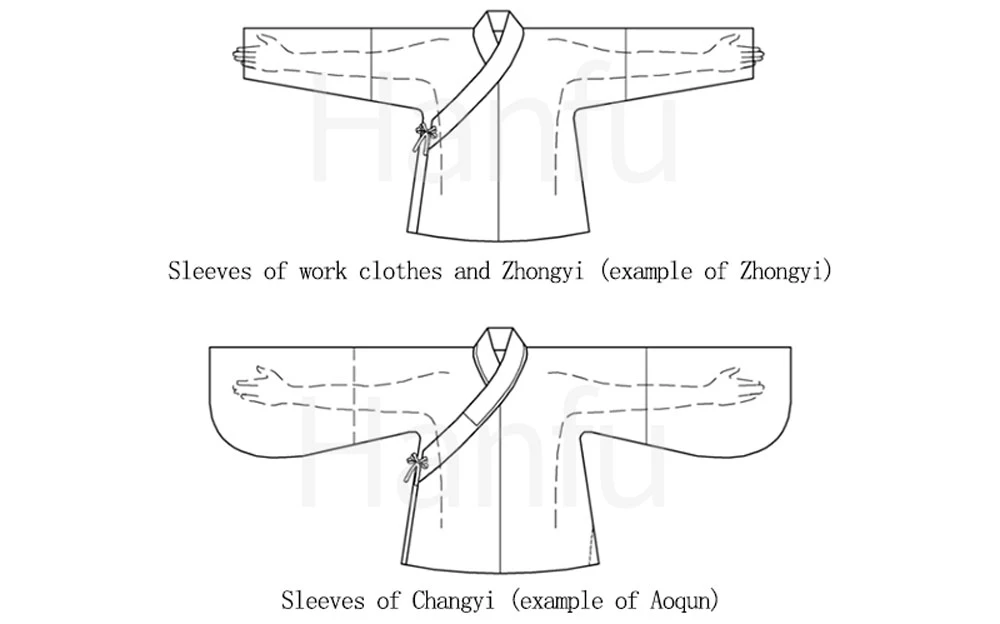
Human body data reference table
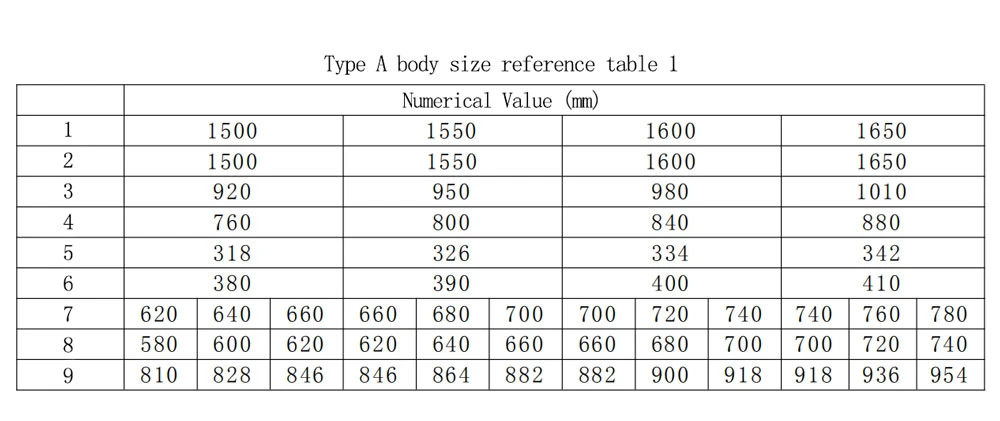
III. Sample Analysis
Because this book is mainly about hanfu pattern-making drawings, each chapter will first explain the shape, but will not use a large amount of text to explain the specific tailoring process. If you have some basic sewing skills, you can learn about the sewing process of hanfu and learn by analogy.
Example of Banbi stitching (stitched in the direction of the arrow in the picture):
The expanded fabric is reserved for the interface between the fabric or the fabric closure. In this picture, the fabric interface is reserved 1 cm, while the fabric closure of the hem is reserved 2 cm.
Note: The above diagram is a seam illustration and does not indicate the absolute order of the seams, for example, when actually sewing, the sleeve edge needs to be sewn onto the edge of the cuff before the sleeve is sewn into shape.
Click to view sewing patterns for each hanfu style:



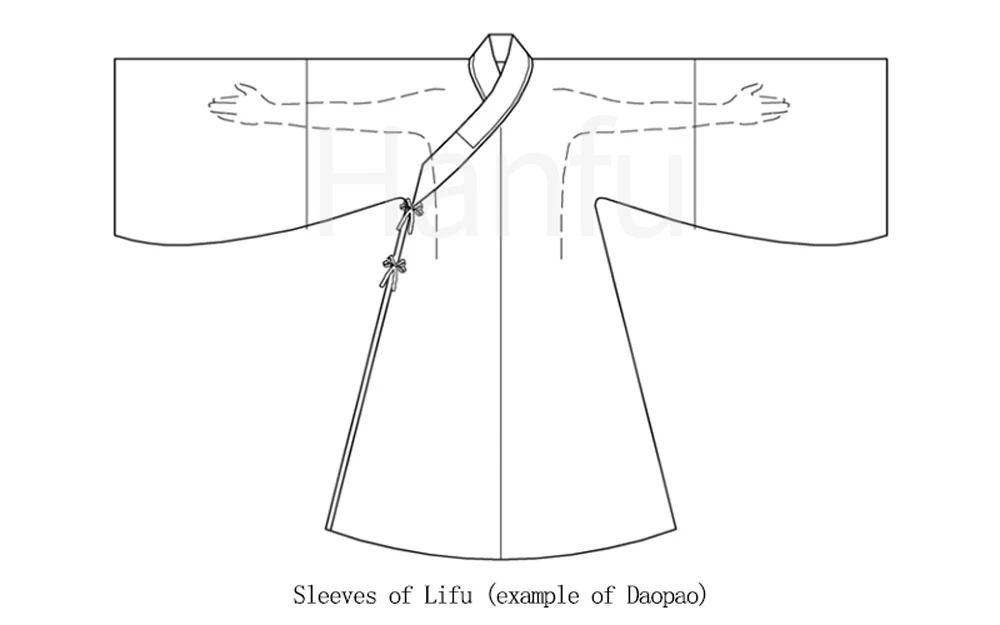
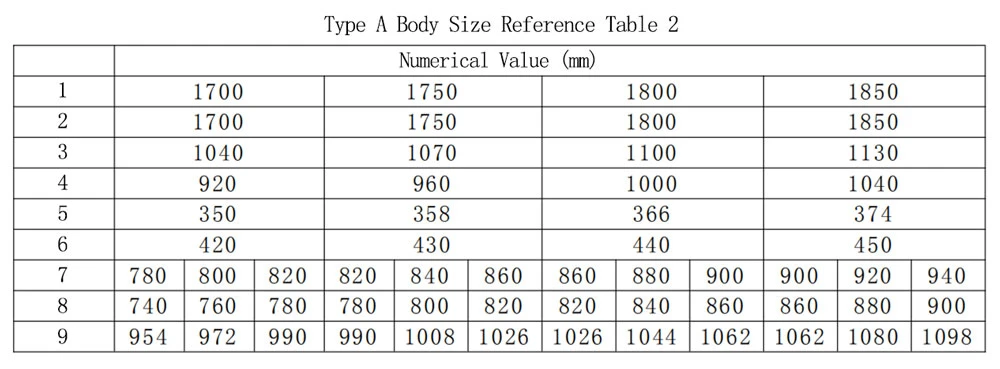
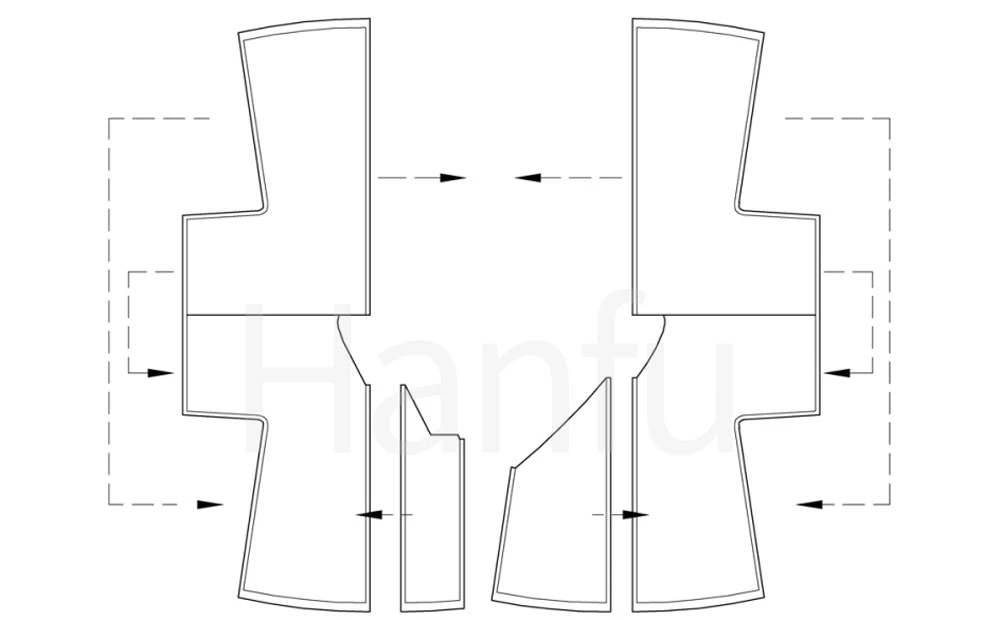
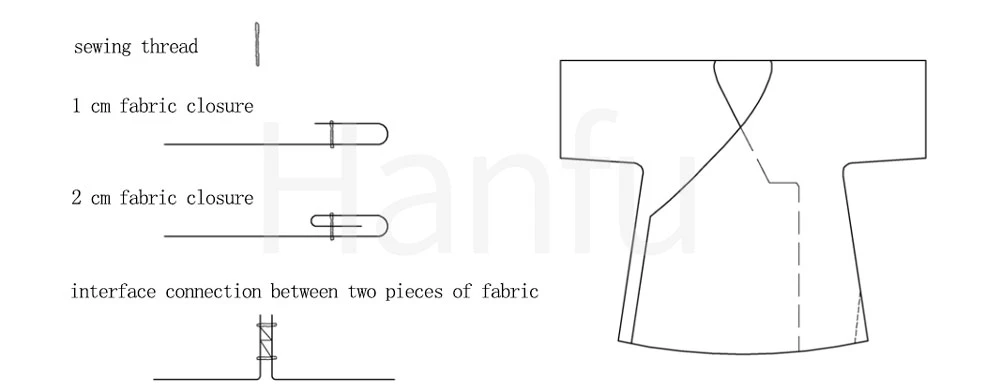
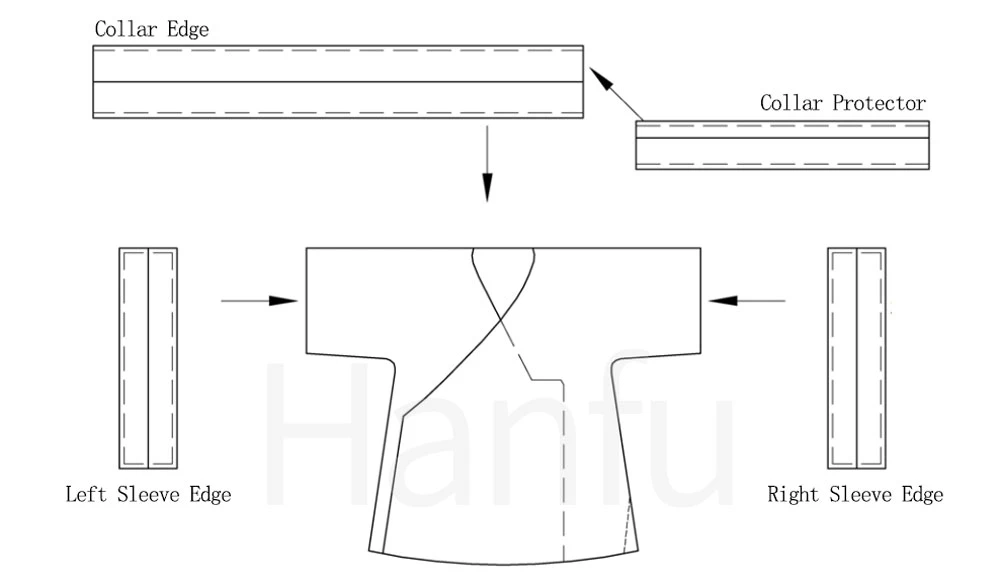
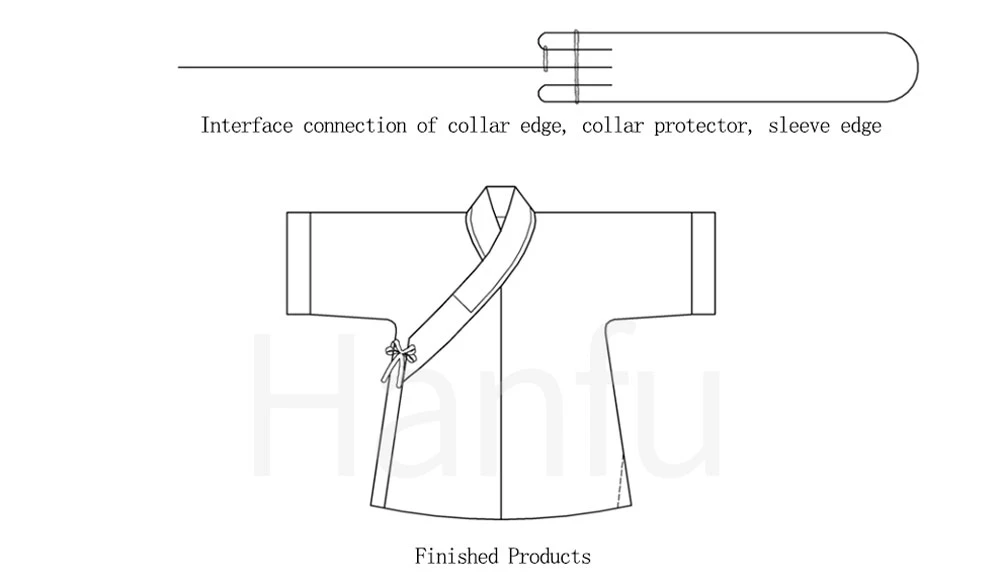

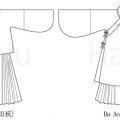
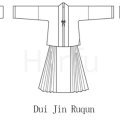
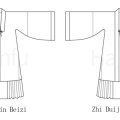
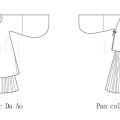


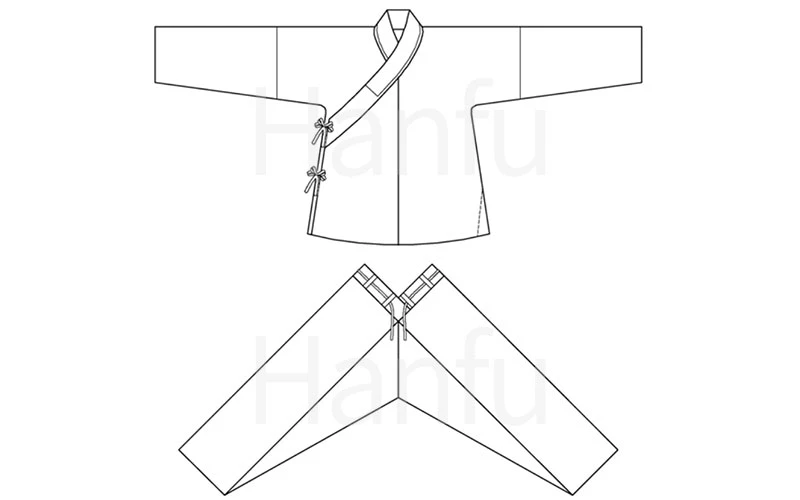
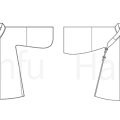
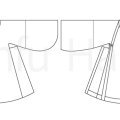
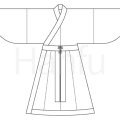
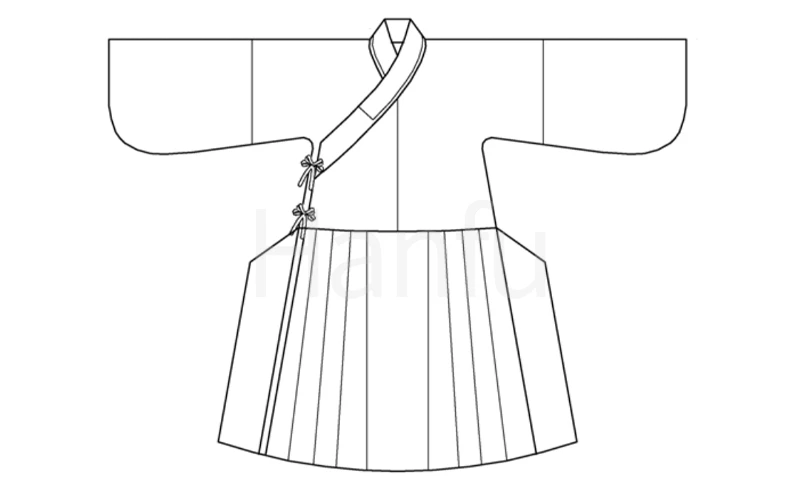
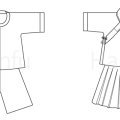

I've made a couple of garments following your guide, although I don't completely like the collar (because it doesn't sit flat to the body but sticks out). I'm trying to modify the garments to have different sleeve or torso widths, but I don't know what to do with the collar... what angle should each lapel have? How steep should the neckline be?😭
I loved the article. Can you write and upload pants patterns? It's hard to find something online. 🙁
These tutorials are helping me figure out how to make my own hanfu from home with very little effort, thank you!
The detailed making process can be found in this Tumblr blogger: Handmaking Hanfu (yi-gege, https://yi-gege.tumblr.com/)
This is a wonderful article. Very informative and concise. Thank you for this. 😍😎👍
Thank you, it does take a lot of time to sort out this guide, and I have only sorted out 3 of the 11 chapters so far.😂😂